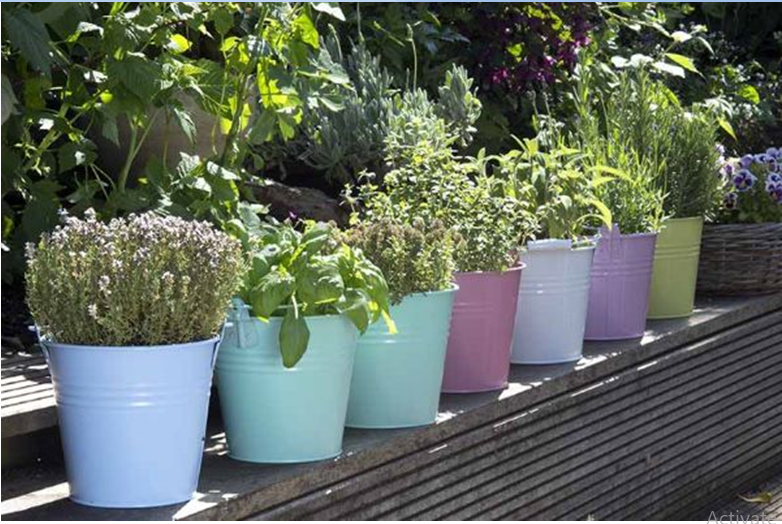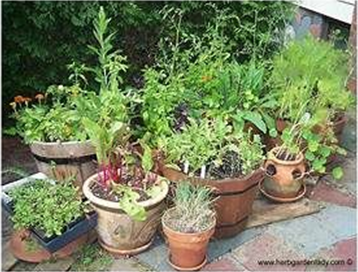Growing Herbs in Pots

A must-have for cooks, herbs add wonderful flavor and fragrance to cooked foods and salads. But they provide many more benefits that go beyond their use in cooking.
Many release their intense fragrances in the warmth of the afternoon sun or when you brush up against their leaves.
Which Herbs Should You Choose?
With such a large variety of herbs available, the best place to start is to choose what you’ll use on a regular basis.
If you tend to cook a lot of a particular type of cuisine, choose plants based on that theme.
- French cuisine favors bay, chervil, chives, fennel, garlic, marjoram, parsley, rosemary, tarragon, and thyme.
- Making pizza, or an Italian theme, would include basil, bay, fennel, garlic, oregano, parsley, rosemary, sage, and thyme.
- For a taste of Mexico, cultivate chili peppers, cilantro, mint, oregano, parsley, and thyme.
- Asian-inspired cuisine would feature Thai basil, coriander (cilantro seeds), garlic, ginger, lemongrass, hot peppers, and star anise.
- If you put up a lot of preserves and pickles, plant a bay tree and sow celery, coriander, dill, and mustard for their seeds.
Site Selection
Position some close to the kitchen for quick convenience, if desired.
They can be placed anywhere for you to enjoy their beauty and fragrance, and look terrific arranged on the deck, doorsteps, edging pathways, patios, and in window boxes.
But not all enjoy the same growing conditions.Some prefer arid, hot conditions while others like to keep cool and moist with afternoon shade. However, they should all receive a minimum of six hours of sunlight each day.
You’ll also want to locate your pots close to a water source. Remember, containers dry out much faster than ground plants, and even drought resistant plants require regular watering.
Pick Your Pot

Just think of all of the interesting pots or containers one can find at a variety of places, including farmer’s markets, antique stores, and garage sales, just to name a few possibilities. An herb gardener can plant in matching pots or use a wide variety for a quaint aesthetic. There are many low-cost herb garden designs that can be implemented with used or recycled containers, just use your imagination.
Containers need to be large enough to comfortably hold the roots and keep your plant upright.A good rule of thumb is to choose pots that are at least one-third as tall as the mature plant, and half to three-quarters of its mature width. They also need good drainage, so make certain there are holes at the bottom of the pots to prevent root rot.
Start with Good Soil
To ensure the healthiest start for your container herb garden, begin with high-quality soil.
Container soil should be lighter in density than garden soil and enriched with organic matter. It should also be amended to provide excellent drainage as well as moisture retention.
And amending with light materials like perlite, vermiculite, or peat moss helps to retain moisture without compacting or saturating the soil.
Here’s a suited blend that you can use for potted plants:
- 1/4 garden soil or potting soil
- 1/4 landscape sand
- 1/4 vermiculite or peat moss
- 1/4 aged compost or manure
This creates a light, airy soil mixture that provides essential nutrients, easy water
Watering and Fertilizing
Containers can dry out quickly in hot or windy weather. They need to be watered regularly, typically when the top inch of soil feels dry.
Remember to water regularly, fertilize monthly, and harvest often for a steady supply of flavorful, fresh leaves!
Source: Gardener’s Path
Better Homesteading






